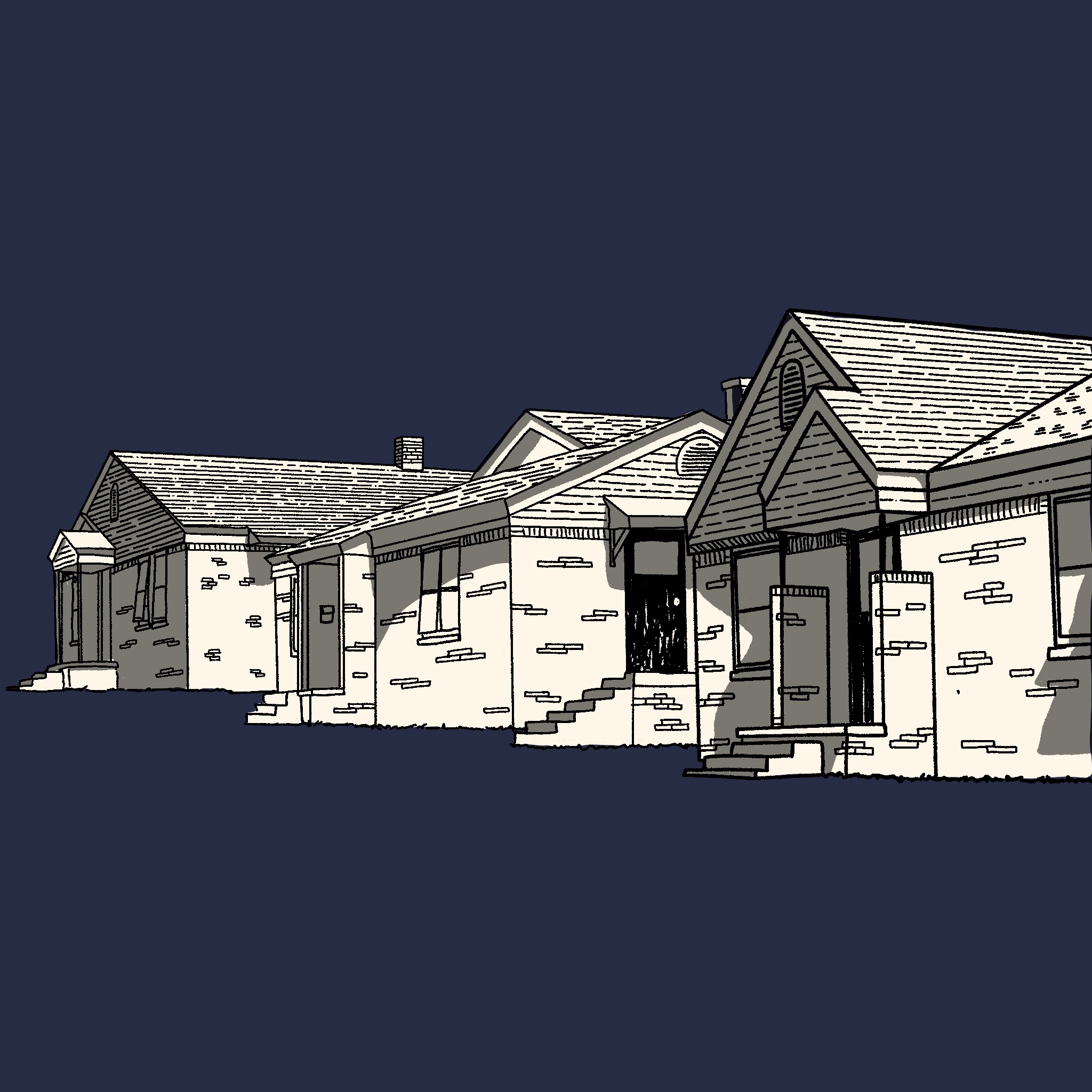After her brother’s funeral a year ago, Johnesha Whiteside and both of her parents got covid. Whiteside was unable to work, and the Midwest City, Okla. resident received six months of rent assistance from Community Cares Partners, an Oklahoma City resource center created to disperse covid rent and utility relief.
In March, Whiteside applied for rent assistance again. Her landlord suggested they wait on the program, which at the time was taking about two months to process applications.
By the summer, Whiteside had started making rent payments again, and the program rejected her application, saying she’d already received the maximum amount of assistance available.
In August, she received an eviction notice. A payment portal says that she owes $3,200 – a mix of back rent, fees and a pet deposit.
Looking at the four-digit number made her dizzy. Whiteside said she drew money from loans and her 401(k), but she’s still at risk of losing the house she shares with her children and her brother’s dog, who she adopted after his death.
She’s scrambling for a solution because she can’t afford to move or cover the security deposit and rent required to secure most rental homes.
“I just don’t want an eviction on me. That’s how homelessness starts,” Whiteside said. “If you have an eviction, no one will let you rent from them unless they’re a slumlord.”
Community Cares Partners Executive Director Ginny Bass Carl said situations like Whiteside’s are becoming more common as the rent assistance program winds down.
“We have to work within the rules of the program,” she said. “I feel like in a lot of cases, rent assistance is only going to be a Band-Aid, and stronger intervention has to come.”
Next Thursday, Community Cares Partners will stop accepting rental assistance applications. Bass Carl said the organization has a backlog of about 30,000 applications and plans to process those from September to December.
Since the organization started in 2020, the housing market in Oklahoma and around the country has become less accessible for low-income renters. Tenants have seen dramatic rent increases, while housing shortages have limited their options, forcing some renters into homes with unsafe living conditions.
“You’re really stuck between a rock and a hard spot, and … if you’re in a position where making your rent each month is a major hurdle to overcome, it’s really hard then to switch to long-term thinking about running out of assistance,” Bass Carl said.
New efforts to prevent eviction since the pandemic
During the pandemic, federal covid relief packages invested about $47 billion in a US Treasury Department program for emergency rental assistance. Some renters and nonprofits have complained that the funds, which have been distributed by local and state governments, have been difficult or slow to access.
[ Read more: When landlords won’t deal with mold, renters have few options ]
From 2021 to June 2022, the program spent about $30 billion on rent and utility assistance.
According to a May Treasury report on the program’s first round of funding, 42% of aid recipients were Black, the largest racial or ethnic group receiving assistance. Most households receiving assistance were led by women, making up 63% of those who received assistance.
As these covid rent assistance programs end, some communities are starting or continuing new initiatives to improve housing stability and prevent evictions.
Community Cares Partners is developing a landlord-tenant resource center in Oklahoma City, which will be modeled after a program that Tulsa nonprofit Housing Solutions launched during the pandemic. The center will include a court-based eviction diversion program and community outreach to educate renters and landlords about their rights and responsibilities, as well as things like financial literacy.
In Philadelphia, Penn., the city council approved a budget in June that gave the city’s eviction diversion program $15 million for rental assistance.
Dan Hyman, staff attorney in the tenant rights unit for the SeniorLAW Center in Philadelphia, said rent assistance has helped his clients, as well as small local landlords, who have been more willing to negotiate to keep tenants in their homes while receiving the aid.
“For seniors on a fixed income, who sometimes get behind because of medical bills or funeral expenses for family members, it’s very difficult to get caught up, and rent assistance can make a huge difference,” he said.
[ Read more: Why renters are paying more for substandard homes ]
Johnson County, Iowa has used some of its American Rescue Plan Act money to extend its eviction diversion program. The county also expanded eligibility for its financial assistance program that helps residents with rent, utilities, transportation and other necessary expenses.
“We also are continuing to look at the need for lowered rents, because if people can afford their home on their income, they’re less likely to need those other supports,” said Sara Barron, executive director of the Johnson County Affordable Housing Coalition.
How delivering HUD-funded rent assistance has changed
Long before covid rent relief, local governments, nonprofits and other groups have provided rent assistance funded by the US Department of Housing and Urban Development.
Those programs provide aid in amounts based on fair market rents for the area, which are calculated by the agency each year.
David-Lee Mattison, interim chief operating officer for HOPE Atlanta in Georgia, said the fair market rent numbers haven’t kept up with rapidly rising rents. That has limited the homes for which the nonprofit can offer rent assistance.
“If it’s $2 over (the fair market rate), we can’t pay it,” he said. “It’s a challenge to assist clients who don’t want to move from where they are.”
Christine Ralston, director of development for Shelter House in Iowa City, said before the pandemic, her nonprofit spent an average of about $300,000 per year on rapid rehousing services, including rent assistance. But last year, both of Shelter House’s rent relief programs provided about $1.3 million in assistance.
“That’s a pretty loud and resounding testimony to the need for rental assistance in our community,” Ralston said. “Housing in Iowa City is really, really expensive, and the market for affordable low-income housing is very tight. … So we need all of the assistance that we can possibly get to get people into what is available.”
[ Read more: Climate disasters worsen the affordable housing crisis ]
Verni Howard, executive director of Providence House in Shreveport, La., said that the pandemic “unveiled the depth and breadth of poverty and need in our community.”
“What it taught us is how to be more thoughtful, how to dig a little deeper in assisting people,” she said. “And the greatest thing out of this is it taught nonprofits how to connect better. We can no longer work in silos.”
Contact BigIfTrue.org editor Mollie Bryant at 405-990-0988 or bryant@bigiftrue.org. Follow her on Twitter.
BigIfTrue.org is a nonprofit news site based in Oklahoma City. Our mission is to report stories that envision a more equitable world and energize our readers to improve their communities. Donate to support our work here.


